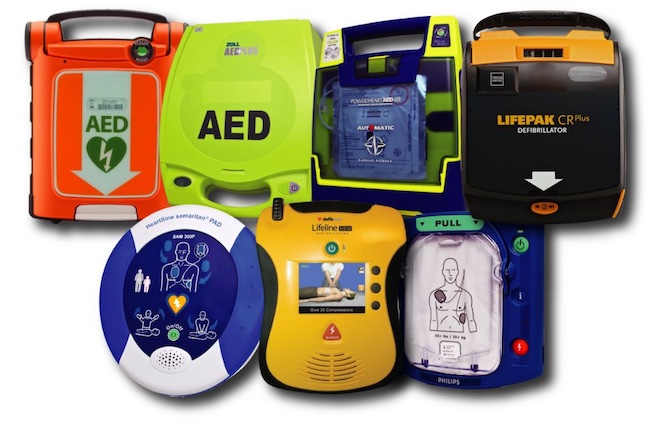AEDs are important tools for people with heart disease. When it comes down to it, these devices can help people with sudden cardiac arrests. For an AED or automated external defibrillator to work, it has to send a shock to keep the heart working.
After some time, an AED might not function properly because it’s old. It might even offer less performance due to improper use. When this happens, you might have to dump the device and get a new one
But some people do not know what to do with an old AED. If you belong to such a group, read on to learn how to dispose of such a device.

How to Dispose of an AED
An AED consists of various parts and accessories. For this reason, you cannot dump the device like a regular household waste. Now here are various parts of the device and how you should dispose of them.
1. Disposing of AED Batteries
Since AED batteries contain hazardous materials, you cannot keep them in a trash can. Instead, you will have to recycle these items at an ideal recycling facility. But the way you will handle the battery depends on its substances.
If the AED battery is a removable lithium battery, you can send it to recycling companies that accept used batteries.
To give your battery to a recycling company, you can use the following steps
- Perform an online search for a local recycling company
- Confirm if they accept used AED batteries.
- Take out the battery from the AED
- Place the battery in a box
- Ship the batteries. If there are lithium batteries, send them by road or rail OR drop the box at an approved drop-off center.
If your AED contains zinc or alkaline, put them in the trash can with your regular home garbage. You can also use the methods for lithium batteries to recycle old zinc or lithium batteries.
2. Disposing of AED Pads
Unused defibration pads do not consist of toxic substances. For this reason, you can keep them in the trash with your regular household waste.
If the defibration pads have been used, they might contain organic materials like tissue, blood, or fluid. Because of these materials, you should cut off the electrodes and dump them as infectious waste.
Below are the general steps for getting rid of used AED electrodes.
Cut out the electrodes from the AED. For this task, use a pair of scissors.
Look closely at the electrodes and check for human tissue or other organic materials.
If you notice any materials, place the electrodes in a clear plastic bag.
3. Disposing of the AED Body
If you want to remove an AED from your home or workplace, you will have to recycle it. After all, this device has silicone semiconductors, plastic/metal casings, and titanium/silicone rubber electrodes.
When Should I Dispose of My AED?
Even if your AED works fine, you might have to change it, especially if it has become old. You might also need to dispose of the device if it does not meet the requirements of government regulatory bodies.
What Should I Do If I Do Not Have a Government-approved AED?
Do you know if your AED is approved by local government agencies? If not, contact the company that sells your device and ask if your AED has any government approval.
It doesn’t, then you might not get the right accessories for your device. Below are some tips that can help with this issue.
- Contact the company for information about your AED model.
- Continue using your AED until you have an AED that is approved by the government.
- Report any issues with your current AED to the correct government agency.
When Should I Dispose of My AED Batteries?
Normally, you should change your AED battery every 2 – 5 years. But before that time, try to inspect the device and ensure it works perfectly.
How Will I Know If My AED Batteries are Working?
Sometimes the batteries might have issues. Luckily, there are ways that you can test the battery on your device.
If your AED has a battery test button, you can use it to check your battery health. But if you can’t find such a button, turn on the device and wait until it tells you to use the electrodes.
Why Should I Recycle Old AED Batteries?
If you place an AED battery in the trash can, it might end up in a landfill. At the landfill, the battery will decay and contaminate the soil. Such actions lead to environmental pollution.
How Not to Dispose of AEDs
To dispose of an AED, you should be cautious. With this in mind, do not dispose of it in ways that might hurt or damage the environment.
- Do not burn your AED
- Do not sell your AED
- Do not bury your AED
- Do not dump your AED in the river or other water bodies.
Wrapping Up
AEDs can be used to revive people who suffered cardiac arrest. But when they expire, you will have to dispose of them properly.
Hazardous parts of the device such as the lithium battery should be sent for recycling. You can also send the entire casing to the same location. But if the battery does not include toxic materials, you might dump it with your household trash.
Do not sell an old AED or dump it into water bodies. Also, avoid burning the device in a pit or anywhere else.
If you want extra help with disposing of your AED, you should contact your waste management company. Besides, you can get extra information from the company that builds your AED.
